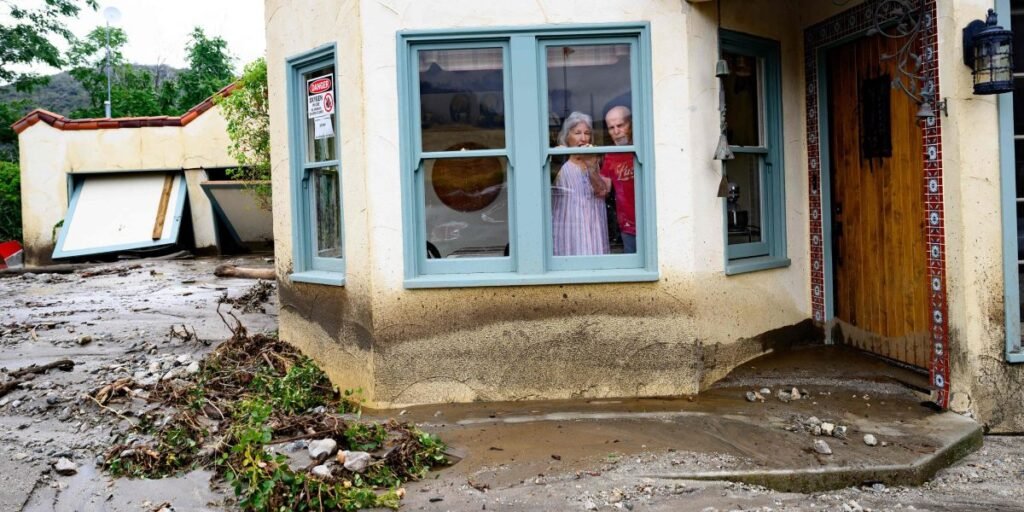Does the end of climate stability mean the end of insurance markets as we know them? And does it mean the beginning of a broader understanding of physical risk by stock and bond holders, regulators, and citizens? The answer to that question will determine whether climate risk will change capital markets forever. Simply put, the first time a property floods it’s an insurance issue, maybe the second time, but from then on it’s an equity or debt issue.
It is important to understand that insurance does not protect against disasters such as flood, wind, fire, hail, etc. Insurance is a financial contract that compensates property owners for the cost of repairing their buildings only after a rare, predictable event occurs. When disasters are no longer rare, unpredictable, and cause damage that cannot be easily repaired (or suggest that buildings should not be rebuilt in their place), the existing market structure for property insurance, and real estate in general, will no longer work.
Climate stability underpins countless assumptions. Farmers can grow the same crops for decades. Architects, builders, engineers, and urban planners can follow building and engineering codes based on historical ranges of temperature and rainfall without learning about the local climate. Real estate has become an asset class valued with spreadsheets and two-dimensional databases. The weather is so mild that few experts care about it.
Historical patterns and repeated weather ranges over time have enabled a large and reliable property insurance market, freeing property owners and lenders from having to predict and prepare for low-probability events. Not only could experts assess which events had a 1% chance of occurring in any given year (“one in 100-year events”), but they could also predict the damage those events would cause.
Unfortunately, past weather data is no longer useful for the present, let alone the future. The atmosphere is warmer than it has been since the dawn of civilization, and it continues to warm. Here is a graph of average atmospheric temperatures going back 100 million years. The green band shows the narrow range that made civilization possible.

Provided by Probable Futures
Today’s insurance market is full of quirks that stem from its supposed stability.
- Virtually all property insurance is annual. There is no term structure.
- After a claim is made, the insured is required to rebuild the same building in the same location.
- The insurance only covers damage to the structure, not the value of the land.
- Regulators often insist on the use of backward-looking data and prohibit the use of climate models or climate-aware catastrophe models.
- Regulators also routinely limit the amount that premiums can increase each year.
Climate change challenges all these assumptions.
Pension funds, investment managers, banks, and even real estate companies have not historically explored climate risks because investors have largely (and logically) assumed that insurance markets price physical risks. For example, mortgages often require borrowers to buy insurance, but a 30-year loan does not require a 30-year insurance policy to be matched; a one-year policy is treated as a sufficient signal that insurance is available for the life of the loan at roughly the same cost.
A few years ago, advanced users of climate and weather models (especially reinsurers and insurance-linked investment funds) began to withdraw from some markets. The withdrawal left insurers unable to offload tail risk as it grew. As a result, most insurers, prohibited by regulators from raising premiums too sharply, began to withdraw from the market, especially in Florida and California. In response, governments have stepped in to provide insurance.
Government insurance plans were established decades ago in nearly every coastal state to shore up real estate markets during periods of market dislocation. These interventions are temporary, risks will naturally return to historical ranges, and the market dislocation will end. Unfortunately, the insurance market does not see the current dislocation as temporary and will not “come back” to bail out the government that has implicitly guaranteed that residents have the right to affordable insurance no matter what. Without explicitly saying so and without a vote of the people, the government is turning property insurance from a market-rate financial product into an implied right. This covert risk transference should worry everyone.
While reevaluating society-constructed assumptions is difficult, climate science can help us figure out how to live comfortably in a warmer world. The same models that accurately predicted rising temperatures and humidity, increased droughts and floods, rising sea levels, more tropical storms, heightened wildfire risk, and a weakening jet stream also warned savvy investors to avoid insuring bloated bonds. The same research and data can help decision makers of all kinds integrate this information into processes as varied as city planning, building codes, mortgage underwriting (including through FNME and FMCC), and REIT valuation. Free education, mapping, and risk tools from Probable Futures, Climate Central, FirstStreet, and others are a great place to start.
About 12,000 years ago, our hunter-gatherer ancestors noticed that the climate was stopping to change. In response, they stopped wandering, settled in communities, and began building the complex, specialized civilizations we know today. If we continue to assume that risk is borne solely by insurance markets, we will end up with increasingly dysfunctional markets and bloated government balance sheets that will increasingly bear the burden of heat, drought, and storms.
Thankfully, unlike our ancestors, we not only know why the climate is changing, but we can predict where and to what extent it will change. Armed with climate knowledge, society can come up with ways to assess current and future risks and ensure financial markets reflect them.
See more must-read articles luck:
The opinions expressed in Fortune.com editorial articles are solely those of the authors and do not necessarily reflect the opinions or beliefs of the authors. luck.

